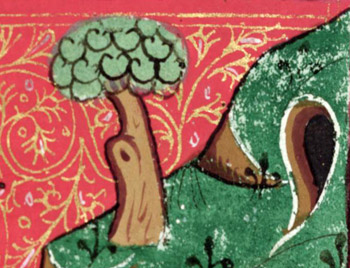Knight of Curtesy and the Fair Lady of Faguell
General Information
Plot Summary

Hearing of the Knight of Courtesy’s chivalric prowess, the Lord of Faguell invites him to his court, making his other knights jealous by giving him land, towns and castles. The knight and the lord’s virtuous wife quickly fall in love. When she overhears him lamenting his love in a garden, she joins him and reveals that his feelings are reciprocated. They vow to keep their love innocent, like that between brother and sister, and kiss chastely. However, another knight hears their conversation and reports a distorted version to the lord. Vowing to kill the knight, he holds a feast, where he teases him for not joining the crusades. Ashamed, the knight prepares to leave immediately. Before he departs, the sorrowful lady gives him a lock of her golden hair to wear on his helm.
The knight sadly sets out for Rhodes. On his way, he wins tournaments and slays a female dragon then has his wounds healed in a nunnery. Meanwhile, the lady mourns his absence, beginning to suspect her lord of arranging his death. In Rhodes the knight fights bravely and kills many Saracens, but is fatally wounded. Before he dies, he instructs his page to remove his heart and deliver it to the lady, wrapped in the lock of hair. However, her husband intercepts the love-token, and has the heart cooked and served to his wife at dinner. When she has finished he reveals that she has eaten her lover’s heart. She immediately retires to her chamber, where she makes confession and receives the sacrament, refusing all other food. Protesting her innocence, she forgives her lord and dies.
From: Elizabeth MacCausland, Ed. ‘The Knight of Curtesy and the Fair Lady of Faguell’. Smith College Studies in Modern Languages Vol. 4, no.1 (1922).